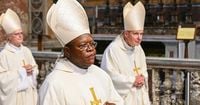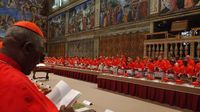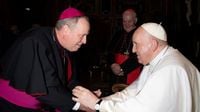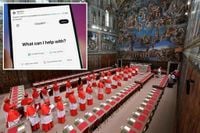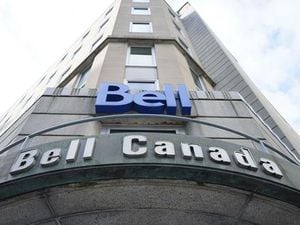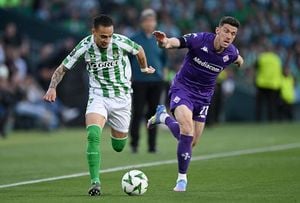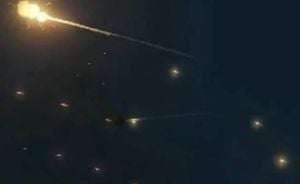As the conclave of cardinals gathered within the Sistine Chapel to select a successor to Pope Francis, the anticipation surrounding the election of the new pope reached a crescendo. On May 8, 2025, Robert Prevost, a 69-year-old American cardinal, was elected as the first American pope in the history of the Catholic Church, taking the name Pope Leo XIV. The announcement came after a decisive vote, marked by the sight of white smoke rising from the chapel’s chimney, signaling to the world that a new pontiff had been chosen.
Prevost, who has spent much of his career as a missionary in Peru, was a prominent candidate going into the conclave, despite the traditional hesitance toward electing a pope from the United States. His dual citizenship as a Peruvian and his extensive experience in the country positioned him favorably among the cardinals. Notably, Pope Francis had previously appointed Prevost to lead the Vatican's office of bishops, a role that conferred significant influence and visibility within the Church.
The conclave, which began on May 7, 2025, saw the participation of 133 cardinal-electors, who were tasked with selecting the Church's 267th pope. The election process is steeped in tradition, requiring a two-thirds majority to confirm a candidate. Prior to the conclave, several cardinals were considered frontrunners, including Pietro Parolin, the Vatican’s Secretary of State, Peter Erdov, Jean-Marc Aveline, and Pierbattista Pizzaballa. However, the emergence of Prevost as a “dark horse” candidate caught many by surprise.
The atmosphere at St. Peter's Square was electric as thousands of onlookers awaited the announcement. Cheers erupted as the white smoke signaled the successful election, with crowds chanting, “Viva il papa!” as Prevost appeared on the loggia wearing the traditional papal attire, including a red cape that Pope Francis had notably opted not to wear during his election.
Despite the excitement surrounding Prevost's election, the conclave was not without its tensions. Reports indicated that some cardinals expressed dissatisfaction with Pope Francis' papacy, particularly regarding his approach to laity involvement in church governance. This discontent highlighted the ideological divides within the College of Cardinals, with factions advocating for different visions of the Church's future.
In the lead-up to the conclave, speculation about the potential for an African pope also gained traction. The Catholic population in Africa has surged, with an estimated 20% of the world's Catholics residing on the continent. Cardinal Fridolin Ambongo Besengu, Robert Sarah, and Peter Turkson were among those considered viable candidates from Africa, although no African cardinal currently holds a major office in the Vatican.
Cardinal Turkson, who previously served as the president of the Pontifical Council for Justice and Peace, was noted for his progressive stance on social justice issues, though he has also faced criticism for his conservative views on other matters. Meanwhile, Cardinal Sarah, known for his strict adherence to traditional Catholic doctrine, has been a polarizing figure within the Church.
As the conclave unfolded, the cardinals were guided by the belief that the Holy Spirit would lead them to the right successor to St. Peter. The secrecy of the conclave is paramount, with strict rules prohibiting cardinals from communicating with the outside world during the voting process. This shroud of mystery often leads to speculation and intrigue surrounding the selection of a new pope.
In the days leading up to the conclave, various AI chatbots were asked to weigh in on the potential candidates for the papacy. ChatGPT and Grok, among others, provided insights into the characteristics and qualities the cardinals might prioritize in their selection. They noted the importance of traits such as strong faith, humility, and a clear vision for the Church's future.
As parishioners across the globe reflected on the significance of the papal election, many expressed hopes for a leader who would uphold the values of compassion and inclusivity exemplified by Pope Francis. In Colorado, for instance, parishioners at the Cathedral Basilica of the Immaculate Conception shared their preferences, with some advocating for Cardinal Sarah due to his traditionalist views.
With Prevost's election, the Catholic Church enters a new chapter under the leadership of Pope Leo XIV. His background as a missionary and his commitment to social justice issues may resonate with the diverse global Catholic community. As he embarks on his papacy, the challenges ahead will require a delicate balance between tradition and the evolving needs of the Church in a rapidly changing world.
The conclave's outcome serves as a reminder of the complexities and traditions that define the selection of a pope, as well as the ongoing dialogue within the Church about its future direction. As the faithful await the new pope’s first address, the world watches closely, eager to see how he will guide the Catholic Church in the years to come.
